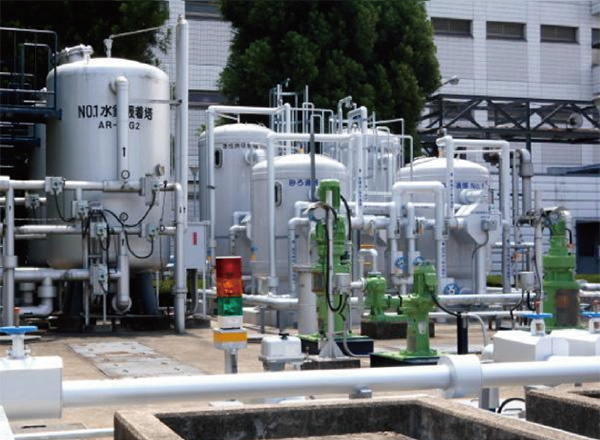Managing Water Resources
Goals and Achievements of Major Initiatives
Asses and manage water risks at production facilities.
| Scope of target | Global |
|---|---|
| Goal for fiscal year 2023 | Target implementation rates for countermeasures at high-risk sites: 75% by fiscal year 2023, 100% by fiscal year 2024 |
| Achievement in fiscal year 2023 | The implementation rate for countermeasures at the three high-risk sites was 75%. |
| Evaluation | ★★★ |
| Goal for fiscal year 2024 | Target implementation rate for countermeasures at high-risk sites: 100% by fiscal year 2024 |
- Evaluations are based on self-evaluations of current progress.
Key: ★★★ = Excellent; ★★ = Satisfactory; ★ = Still needs work
Policies and Organization
Basic Approach
The DIC Group maintains a firm grasp of water risks relevant to Group operations and promotes a variety of initiatives to ensure the effective use of water resources.
Finding effective ways to conserve and manage water resources is a crucial global challenge. The DIC Group withdraws fresh water from multiple sources for cooling production equipment, as well as for use in products and as drinking water for employees. The Group also discharges wastewater—after purifying it in accordance with internal standards that exceed official standards in the countries and territories in which it has operations—into rivers and other freshwater bodies. In addition to evaluating water risks at each of its production sites around the world and implementing countermeasures, the Group works to protect and ensure the effective use of water resources.
Principal Initiatives in Fiscal Year 2023
01Assessing Water Risks
In recognition of the fact that water risks, which include drought, fl oods and water quality, vary greatly from region to region, companies are increasingly expected to set targets that take into account local water conditions in line with regional challenges as outlined recently by the World Wide Fund for Nature (WWF).*1 In fiscal year 2018, the DIC Group began using the Aqueduct Water Risk Atlas.*2 However, Aqueduct assesses only regional water risks, that is, risks associated with a site’s location, which are caused by external factors, and does not take into account operational water risks, which are attributable to internal factors. Accordingly, under the guidance of a third-party organization the Group established a consistent global framework for assessing water risks arising from both local water conditions and site operations, which it has deployed to screen sites in Japan, the PRC and the Asia–Pacific region. Specifically, the Group classified water risks into categories such as drought, fl oods and water quality, and mapped them using two scales, namely, “regional water risks” and “operational water risks,” classifying those sites that register at the upper end of both scales as being high risk, as shown in the diagram below. Regional water risks were assessed using the Aqueduct Water Risk Atlas, while operational water risks were evaluated using a questionnaire developed in-house. Screening identified 16 sites as being high risk.
The DIC Group resolved to confirm and implement countermeasures at 16 high-risk sites between fiscal years 2021 and 2024 and set targets for rate of completion. In fiscal year 2025, the Group will revise its water risk assessment criteria to identify sites with lower risk levels, which it will designate as medium-risk sites. Between fiscal years 2025 and 2030, the Group also plans to implement countermeasures at medium-risk sites. (Please see the diagram below.)
The DIC Group is gradually implementing countermeasures at high-risk sites, completing this process at four sites each in fiscal years 2021 and 2022 and at three sites in fiscal year 2023. One high-risk site was closed in late fiscal year 2023, as a result of which the total number of such sites is currently 15.
- Targets were published in the World Resources Institute (WRI)’s Setting Site Water Targets Informed by Catchment Context: A Guide for Companies.
- The DIC Group uses the WRI’s Aqueduct Water Risk Atlas to map water risks such as drought and floods, among others, at 186 sites worldwide.
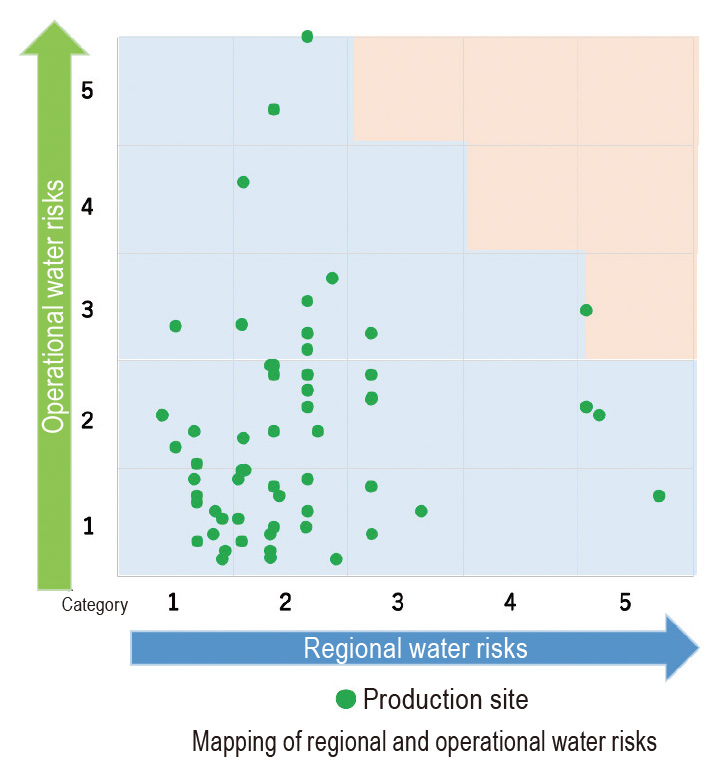
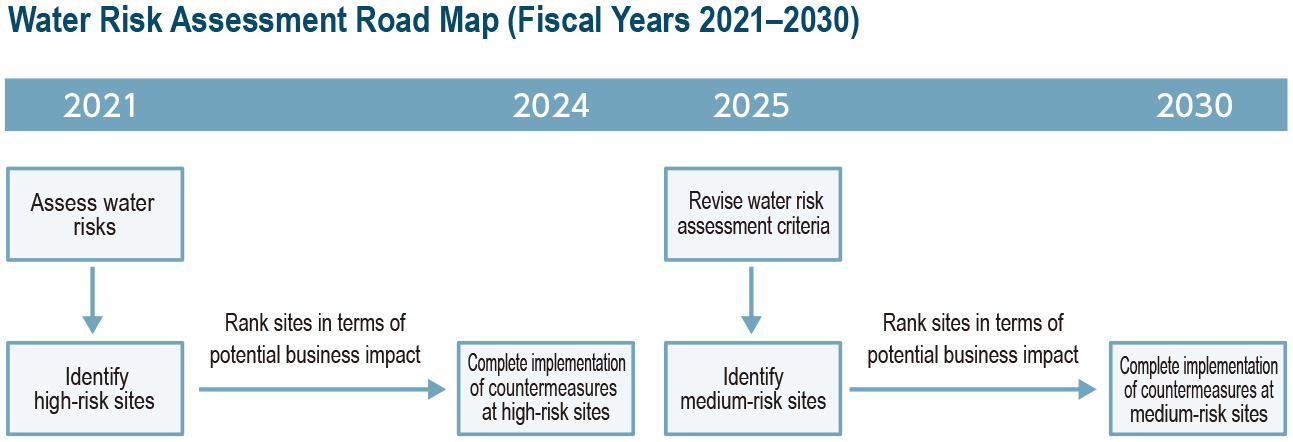
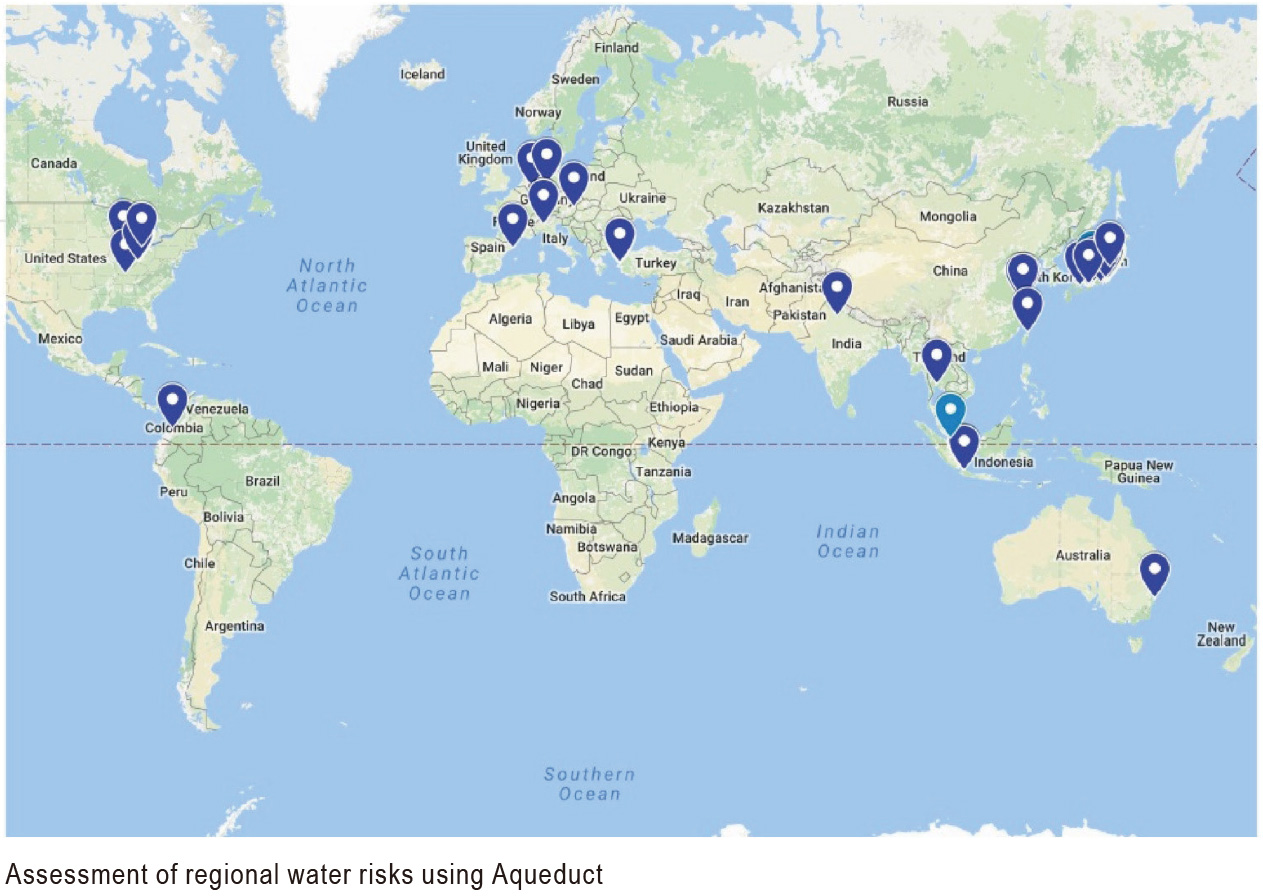
02Managing the Withdrawal of Water at and Discharge of Wastewater from Sites
Since fiscal year 2017, the DIC Group has used the Global Reporting Initiative (GRI)’s guideline* for collecting data on fresh water withdrawn and wastewater discharged at each of its sites. In fiscal year 2023, the global DIC Group withdrew a total of 47,215,000 m³ of fresh water, down 14% from fiscal year 2022, and discharged a total of 43,369,000 m³ of wastewater, a decline of 15%. Fresh water withdrawn and wastewater discharged at Group sites in Japan amounted to 25,450,000 m³, a decrease of 8%, while wastewater discharged, at 23,886,000 m³, was down 9%. Fresh water withdrawn at and wastewater discharged from DIC Group sites in other countries and territories fell 19%, to 21,765,000 m³, and 22%, to 19,483,000 m³, respectively. The DIC Group will continue to advance the effective management of water resources.
- This guideline is included in the GRI’s G4 Sustainability Reporting Guidelines.
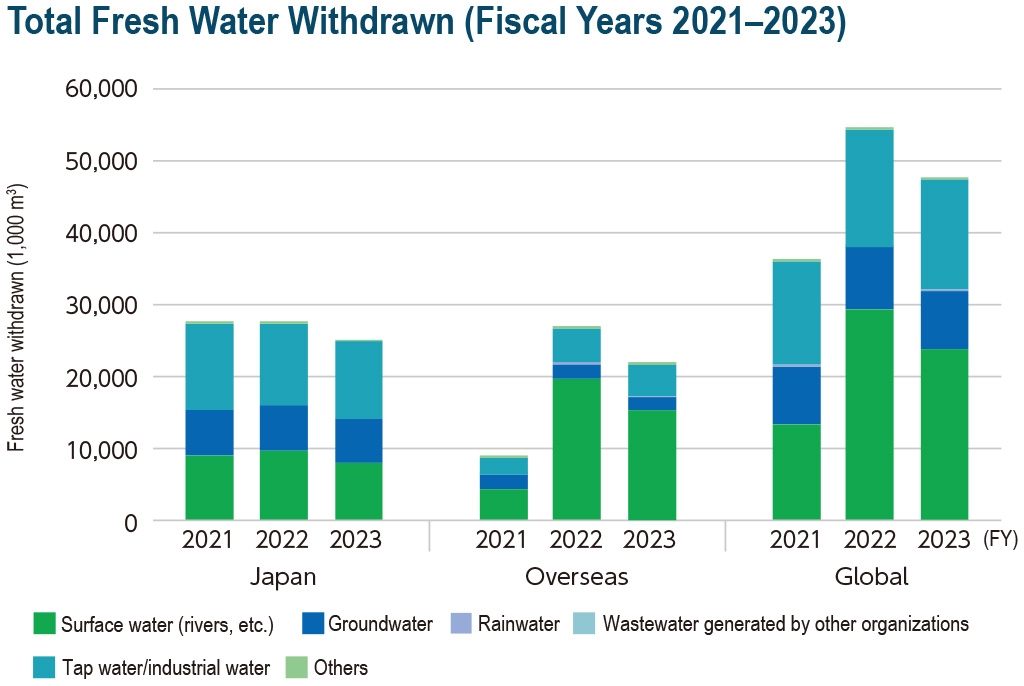
03Efforts to Reduce Use of Water Resources and Address Risks Related to the Discharge of Wastewater
Most of the water used by the DIC Group is for the cooling of equipment. Accordingly, the Group uses cooling towers, among others, to recycle water and reduce use of water resources. To lower risks associated with wastewater generated by its production facilities, the Group purifies such wastewater to a level that exceeds that mandated by law. For example, plant domestic wastewater (gray water) undergoes primary treatment using a process such as oil–water separation before being discharged offsite. Wastewater from production processes also goes through secondary treatment—for example, an activated sludge process—before being cooled to a normal room temperature, undergoing oil–water separation and being discharged off-site. In some cases, a tertiary process such as activated carbon treatment is further employed to remove harmful substances.
DIC’s Central Research Laboratories in Chiba Prefecture, Japan, and subsidiary Siam Chemical Industry in Thailand have achieved zero discharge of wastewater. Both continue working to further reduce their impact on water resources. At the Central Research Laboratories, groundwater is used to supply the approximately 40 m³ of water used by the site daily. The facility has established a fully closed system, which means all water is treated and reused or disposed of on-site. The Central Research Laboratories has formulated a plan to install additional water purification equipment with the aim of improving the quality of treated wastewater, thereby reducing the amount of water it withdraws.
04Reporting to the CDP’s Water Security Program in 2023
In fiscal year 2023, the DIC Group received a score of B in the CDP’s* water security program. Going forward, the Group will continue working to strengthen its water security initiatives and earn a higher evaluation.
- The CDP, formerly the Carbon Disclosure Project, is a nonprofit organization that operates a global disclosure system that seeks to promote greenhouse gas emissions reductions, water resources management and forest conservation.

